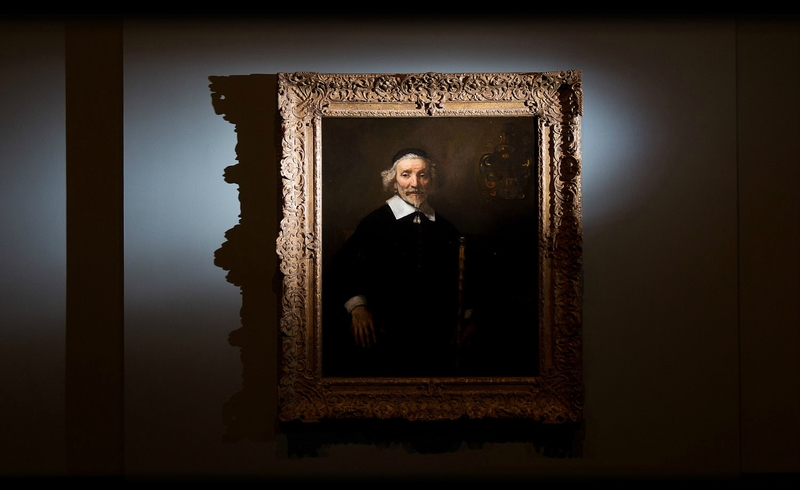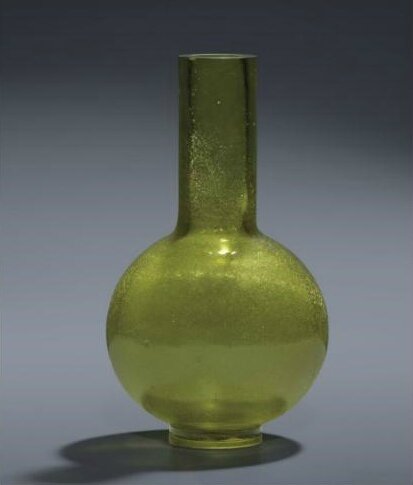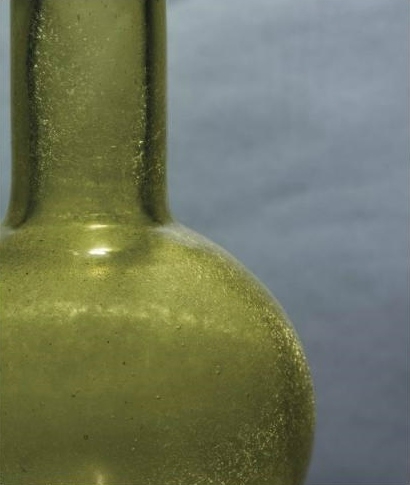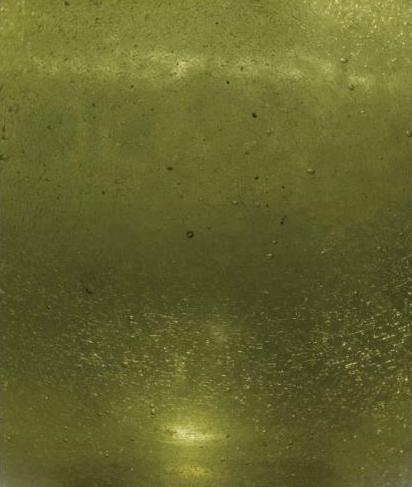![image (5)]()
Marcel Broodthaers, Poêle De Moules’, c1965. Estimate: £40,000-60,000.
SURREY.- Tate Director Sir Nicholas Serota described Michael Compton as “arguably the first curator working in England to command international respect for his practice as a maker of exhibitions, collaborator with artists and contributor to the discourse of contemporary art”.
On June 27, Ewbank’s, Surrey’s premier auctioneer of fine art and antiques, will sell The Michael Compton Collection of Post War and Contemporary Art, a group of 28 works by luminaries Roy Lichtenstein, Marcel Broodthaers, Terry Frost, Henry Moore, Richard Long, Victor Newsome, Keith Milow, Billy Al Bengston, Ian Stephenson, Sol LeWitt and Joe Tilson, most of them gifted in thanks by the artists or their families whose careers were enhanced by the exhibitions Compton created. The collection will be offered with its own catalogue and is expected to raise around £200,000.
Frederick R.Weisman (1912-1994) was an entrepreneur, philanthropist, and art collector, who held an uncompromising belief in the cultural value of art and an understanding of the importance of both the individual artist and the creative process.
A small Lichtenstein bronze, ‘Yellow Brushstroke’ is an exception. Number 11 of 19 from an initial lifetime casting, it was presented to Compton by the Frederick R. Weisman Art Foundation at an awards event held at the Los Angeles Museum of Contemporary Art on May 23 1991. The presentation was in recognition of his work as curator of the 1989 Marcel Broodthaers exhibition at the Walker Art Center in Minneapolis. It is estimated at £40,000-60,000.
Lichtenstein developed his Brushstrokes paintings as sculptural representations in the 1980s and ‘90s, depicting the gestural expressions of the brushstroke itself. In his own words, Lichtenstein said the brushstroke “is just an idea to start with, and painting it makes it more concrete, but when you do it in bronze sculpture, it becomes real and has weight and is absurd, contradictory and funny”.
![image (1)]()
![image (2)]()
![image (3)]()
![image (4)]()
Roy Lichtenstein, American (1923-1997). Weisman Art Award 'Yellow Brushstroke', 1991.
Cast bronze sculpture with patina and enamel paint. Incised with signature 'rf Lichtenstein' on the side of the base. Stamp numbered 11 on the bottom of the base (from initial lifetime casting of 19). Stamped with dedication, date and foundry mark 'F.R. WEISMAN ART AWARD, 1991, R.L. -89-2157. ROY LICHTENSTEIN & GEMINI G.E.L.' on the base. Only the initial 19 produced in the original lifetime casting were distributed as awards between 1991-1995 by the Frederick R. Weisman Art Foundation. h:8.70 w:12.60 d:4.70 in. Estimate £ 40,000-60,000
PROVENANCE: This award was presented to Michael Compton CBE by the Frederick R. Weisman Art Foundation at an awards event held at the Los Angeles County Museum of Art on May 23 1991. The award was given to Mr. Compton for his work as curator of the 1989 'Marcel Broodthaers' exhibition at the Walker Art Center in Minneapolis (see lots 19 to 28 for works by the artist in this sale). Another sculpture award from the original lifetime casting was recently sold in New York at Phillips Evening & Day Editions auction on 28th April 2014 (lot 66).
Frederick R.Weisman (1912-1994) was an entrepreneur, philanthropist, and art collector. Holding an uncompromising belief in the cultural value of art and an understanding of the importance of both the individual artist and the creative process.
This lot is part of a single owner collection of 28 lots to include Roy Lichtenstein, Marcel Broodthaers, Terry Frost, Henry Moore, Richard Long, Victor Newsome, Keith Milow, Billy Al Bengston, Ian Stephenson, Sol LeWitt and Joe Tilson.
ROY LICHTENSTEIN (1923-1997) - BRUSHSTROKES
'Brushstrokes series' is the name for several paintings produced from 1965 by Roy Lichtenstein and also refers to sculptural representations made in the 1980s and 1990s - mainly monumental vertical sculptures to be displayed out of doors in which he playfully used the gestural expressions of the brushstroke itself. The 'domestic' size of 'Yellow Brushstroke' is rare among the artist's oeuvre. For a similar example see the Lichtenstein painting 'Yellow Brushstroke' (1965), Kunsthaus Zürich (museum in Zürich, Switzerland). In 2001 "Brushstrokes: Four Decades" was held in New York City at the Mitchell-Innes and Nash Gallery.
"It [the Brushstroke] was the way of portraying this romantic and bravura symbol in its opposite style, classicism. The Brushstroke plays a big part in the history of art. Brushstroke almost means painting or art. I did isolate Brushstrokes in 1965 and used cartoon brushstrokes to depict subject matters in the 1980s. I also did Brushstroke sculptures in bronze and wood to make them more palpable. ... the Brushstroke, it is just an idea to start with, and painting it makes it more concrete, but when you do it in bronze sculpture, it becomes real and has weight and is absurd, contradictory and funny" ROY LICHTENSTEIN.
(Mercurio, Gianni (2010). Roy Lichtenstein: Meditations On Art. SKIRA. p. 211).
Marcel Broodthaers (1924-1976) spent 20 years in poverty as a struggling poet before turning to art and began to make objects in 1963. One the surreal images linked to him most often is ‘Poêle De Moules’, mussel shells in a frying pan, a witty nod to his homeland’s national dish. The piece is one of 10 lots in the sale gifted to Compton by the artist’s widow, Maria, at the time he was working with her on a proposed catalogue-raisonné of her husband’s work. This involved regular visits to Brussels in the 1980s and ‘90s to do research.
Broodthaers was a writer, poet, filmmaker, photographer, journalist and artist, who famously remarked he would rather have put off the choice of profession until his death. Closely associated with the Belgian Groupe Surréaliste-revolutionnaire, he made use of found objects and collage, incorporating written language in his art, using whatever was at hand for raw materials, most notably the shells of eggs and mussels. Poêle De Moules’ is estimated at £40,000-60,000.
![image (7)]()
![image (8)]()
Marcel Broodthaers, Belgian (1924-1976), c1965. 'Poêle De Moules'. Mussel shells, dyed resin, and frying pan.
h:6.30 w:11 d:6 in. Estimate £ 40,000-60,000
PROVENANCE: Gifted to Michael Compton by the artist's widow, Maria, when he was working with her on a proposed catalogue-raisonné of the artist's work. This involved regular visits to Brussels to do research in the 1980s and 1990s. Similar examples were exhibited at the Tate Gallery Retrospective in 1980 which was curated by Michael Compton. These included 'Poêle De Moules', 1965; and 'Moules sauce blanche' 1967 (Marcel Broodthaers, Walker Art Center, Rizzoli, pp.130/131). Underside of Mussels with label stamped 'Broodthaers Estate' and numbered '40006' in red ink.
This lot is part of a single owner collection of 28 lots to include Roy Lichtenstein, Marcel Broodthaers, Terry Frost, Henry Moore, Richard Long, Victor Newsome, Keith Milow, Billy Al Bengston, Ian Stephenson, Sol LeWitt and Joe Tilson.
MARCEL BROODTHAERS (1924-1976): A writer, poet, filmmaker, photographer, journalist and artist. As Broodthaers himself said, he would rather have put off the choice of profession until his death. Language, as a symbol that conveys meaning, is a central theme in his texts, objects, installations, films, photographs, slide projections and prints.
Broodthaers was born in Brussels in 1924. Aged 16 or 17 he had some contact with the Belgian Surrealists, particularly Magritte, who gave him a 1914 copy of 'Mallarmé's 'Un Coup de Dés' where the contradiction between the printed word and their layout were later a crucial influence on him. From 1945 he was associated with the Groupe Surréaliste-revolutionnaire. Also a keen photographer, in 1958 he began to publish articles illustrated with his own photographs. At the end of 1963 he decided to become an artist, symbolically embedding fifty unsold copies of his book of poems 'Pense-Bête' in plaster, creating his first art object. A Broodthaers press release from 1964 read as follows:
"I, too, wondered whether I could not sell something and succeed in life. For some time I had been no good at anything. I am forty years old... Finally the idea of inventing something insincere finally crossed my mind and I set to work straightaway. At the end of three months I showed what I had produced to Philippe Edouard Toussaint, the owner of the Galerie St Laurent. 'But it is art' he said 'and I will willingly exhibit all of it.''Agreed' I replied. If I sell something, he takes 30%. It seems these are the usual conditions, some galleries take 75%. What is it? In fact it is objects."
- MARCEL BROODTHAERS, 1964
Broodthaers made use of found objects and collage, incorporating the written language in his art and using whatever was at hand for raw materials, most notably the shells of eggs and mussels. Such as in 'Grande casserole de moules', 1966; and 'Coupe avec coquilles d'oeufs', 1967 (Marcel Broodthaers, Walker Art Center, Rizzoli, P.126/127). From late 1969, Broodthaers lived mainly in Düsseldorf, Berlin, and finally London. He died in Cologne in 1976 on his 52nd birthday. He is buried at Ixelles Cemetery in Brussels under a tombstone of his own design.
In 1980 Compton curated the exhibition 'Marcel Broodthaers' at Tate Gallery, London, the first retrospective after the artist's death in 1976. In 1989 Compton curated 'Marcel Broodthaers' at the Walker Art Center Minneapolis for which he received a Weisman award (Lot 1 in this Sale). The exhibition travelled to the Museum of Contemporary Art, Los Angeles and the Carnegie Museum of Art, Pittsburgh. Other important Broodthaers exhibitions include Jeu de Paume, Paris, 1991; and Palais des Beaux Arts, Brussels, 2000. In England his work was shown at Milton Keynes Gallery, 2008 and Michael Werner London, in 2013.
‘Un Chateaubriand bien saignant pour deux’. (A rare Chateaubriand for two) is unsigned but shares the same provenance as the mussels. It is stencilled (?) on the unprimed reverse of the canvas. It is estimated at £30,000-50,000, while ‘Palette’, done in coloured pencils on a prepared canvas board in 1973-4 is estimated at £15,000-25,000.
![image (2)]()
![image (3)]()
Marcel Broodthaers, Belgian (1924-1976), 'Un Chateaubriand bien saignant pour deux' 1973. (A rare chateaubriand for two.).
Painted impression on un-primed/back of canvas. Unsigned, framed and glazed. EXHIBITED; LOANED TO MILTON kEYNES GALLERY 26TH JANUARY-30 MARCH 2008; MARCEL BROODTHAERS EXHIBITION (ill in Catalogue for the Exhibition p85.) h:43.50 w:36 in. Estimate £ 30,000-50,000
PROVENANCE: Gifted to Michael Compton by the artist's widow, Maria, when he was working with her on a proposed catalogue-raisonné of the artist's work. This involved regular visits to Brussels to do research in the 1980s and 1990s. Similar works are included in 'Peintures' (Pictures), a 1973 work comprising nine canvases currently in the Tate collection.
This lot is part of a single owner collection of 28 lots to include Roy Lichtenstein, Marcel Broodthaers, Terry Frost, Henry Moore, Richard Long, Victor Newsome, Keith Milow, Billy Al Bengston, Ian Stephenson, Sol LeWitt and Joe Tilson.
EXHIBITED; LOANED TO MILTON kEYNES GALLERY 26TH JANUARY-30 MARCH 2008; MARCEL BROODTHAERS EXHIBITION (ill in Catalogue for the Exhibition p85.)
A photographer’s light box with photographs and slides inscribed ‘Avion’ and ‘Avis’ is estimated at £10,000-20,000.
![image (3)]()
![image (4)]()
![image (6)]()
Marcel Broodthaers, Belgian (1924-1976), Light box with Avion and Avis inscribed photographs/slides.
h:7.50 w:6 d:2.80 in. Estimate £ 10,000-20,000
PROVENANCE: Gifted to Michael Compton by the artist's widow, Maria, when he was working with her on a proposed catalogue-raisonné of the artist's work. This involved regular visits to Brussels to do research in the 1980s and 1990s.
This lot is part of a single owner collection of 28 lots to include Roy Lichtenstein, Marcel Broodthaers, Terry Frost, Henry Moore, Richard Long, Victor Newsome, Keith Milow, Billy Al Bengston, Ian Stephenson, Sol LeWitt and Joe Tilson.
Language as a symbol that conveys meaning is a central theme in Broodthaers’ texts, objects, installations, films, photographs, slide projections and prints. A work comprising three magic slate boards mounted on grey card is estimated at £5,000- 10,000 and a group of 12 children's ABC play bricks stencilled in black in a Dr. Pusscat on the Mouse box is estimated at £4,000-6,000, as is a pair of green glass wine bottles with printed labels ‘Pluie’ and ‘Mer du Nord’ (‘Rain’ and ‘Sea of The North’.
![image (4)]()
Marcel Broodthaers, Belgian (1924-1976), Three magic slate boards mounted on grey card.
h:13.50 w:27 in. Each Panel 7.75" x 5.75", frame 13.5" x 27". Estimate £ 5,000-10,000
PROVENANCE: Gifted to Michael Compton by the artist's widow, Maria, when he was working with her on a proposed catalogue-raisonné of the artist's work. This involved regular visits to Brussels to do research in the 1980s and 1990s.
This lot is part of a single owner collection of 28 lots to include Roy Lichtenstein, Marcel Broodthaers, Terry Frost, Henry Moore, Richard Long, Victor Newsome, Keith Milow, Billy Al Bengston, Ian Stephenson, Sol LeWitt and Joe Tilson.
![image (6)]()
![image (7)]()
![image (8)]()
Marcel Broodthaers, Belgian (1924-1976), a b c (Children's Cubes) 1974.
a b c stencilled in black on a set on twelve childs play bricks in Dr. Pusscat on the Mouse B M Series box. h:2 w:7 d:5.50 in., each brick 3.5cm x 3.5cm. Estimate £ 4,000-6,000
PROVENANCE: Gifted to Michael Compton by the artist's widow, Maria, when he was working with her on a proposed catalogue-raisonné of the artist's work. This involved regular visits to Brussels to do research in the 1980s and 1990s.
This lot is part of a single owner collection of 28 lots to include Roy Lichtenstein, Marcel Broodthaers, Terry Frost, Henry Moore, Richard Long, Victor Newsome, Keith Milow, Billy Al Bengston, Ian Stephenson, Sol LeWitt and Joe Tilson.
EXHIBITED; LOANED TO MILTON kEYNES GALLERY 26TH JANUARY-30 MARCH 2008; MARCEL BROODTHAERS EXHIBITION (ill p 83 in the catalogue)
![image (7)]()
![image (8)]()
![image (9)]()
![88028_view 05_05]()
Marcel Broodthaers, Belgian (1924-1976), Pair of green glass wine bottles with printed labels 'Pluie' and ' Mer du Nord'.
English translation: 'Rain' and 'North Sea'. With a negative image of the bottles labelled 'Heini Schneebeli Photographer'. Estimate £ 4,000-6,000
PROVENANCE: Gifted to Michael Compton by the artist's widow, Maria, when he was working with her on a proposed catalogue-raisonné of the artist's work. This involved regular visits to Brussels to do research in the 1980s and 1990s.
This lot is part of a single owner collection of 28 lots to include Roy Lichtenstein, Marcel Broodthaers, Terry Frost, Henry Moore, Richard Long, Victor Newsome, Keith Milow, Billy Al Bengston, Ian Stephenson, Sol LeWitt and Joe Tilson.
More valuable of two untitled abstracts by Sir Terry Frost (1915-2003) is an unfinished oil and collage on hardboard done in 1954-56 and estimated at £10,000- 20,000. The work was begun when Frost was a Gregory Fellow at Leeds University and given to Compton who at the time was assistant to the director at the city’s art gallery.
Frost told Compton and his wife, Susan, that the motifs were inspired by a visit to Malham Tarn in the Yorkshire Dales. Frost had already produced a smaller sketch, also painted on hardboard, which Mr and Mrs Compton owned, so he presented them with this version saying, “I don't know how to finish this so I'd like you to have it”. The work was probably painted in the studio provided by the university in Moor Road, Leeds and is similar to a group of works which Frost related to his experience of the Dales landscape.
![88028_view 05_05]()
Sir Terry Frost, R.A., British (1915-2003), untitled, unfinished oil and collage on hardboard, 1954-56.
122 x 40 cm - h:48 w:16 in. Estimate £ 10,000-20,000
PROVENANCE: This work was begun when Frost was a Gregory Fellow at Leeds University and given to his friends Susan and Michael (who was Assistant to the Director, City Art Gallery and Temple Newsam House, Leeds from 1954-57). Frost told them the motifs were inspired by a visit to Malham Tarn; he had already produced a smaller sketch (also painted on hardboard) which they owned so he presented them with this version saying, "I don't know how to finish this so I'd like you to have it!" The work was probably painted in the studio provided by the University in Moor Road, Leeds as it belongs to the period when he was a Gregory Fellow and it bears a likeness to a group of works which Terry Frost related to his experience of the landscape of the Yorkshire Dales. Similar details can be found on 'Untitled Composition' 1954-56 (Tate ref: T05719).
This lot is part of a single owner collection of 28 lots to include Roy Lichtenstein, Marcel Broodthaers, Terry Frost, Henry Moore, Richard Long, Victor Newsome, Keith Milow, Billy Al Bengston, Ian Stephenson, Sol LeWitt and Joe Tilson.
SIR TERRY FROST, R.A, 1915-2003: Born in 1915 in Warwickshire. An abstract painter known for his association with the St Ives School. Frost was captured during the 1941 invasion of Crete. While a prisoner of war he discovered his love for painting. Later in London Frost developed his signature style of circles and abstract shapes used to convey movement. Married in 1945 before moving to Newlyn in 1946, Frost worked as an assistant to Barbara Hepworth and played a crucial role in the St Ives School, a colony of mainly abstract artists, along with Ben Nicholson and Patrick Heron. He taught at Bath Academy of Art and in Leeds, before becoming Artist in Residence at the Department of Fine Art, Reading University in 1965, later the university's Professor of Painting. Made a Royal Academician in 1992 and knighted in 1998 Frost exhibited in London many times. A major retrospective 'Terry Frost: Six Decades', was held at the Royal Academy in 2000.
An abstract in watercolour on paper in black, brown and white was painted in 1957 after Frost's Gregory Fellowship ended and while he was teaching at Leeds College of Art. It is estimated at £2,000-4,000. Similar detail can be found in a work in the Tate Collection ‘Khaki and Lemon, 1956’.
Sir Henry Moore (1898-1986) gifted two inscribed lithographs to Compton in thanks for organising the 1977 Henry Moore Drawings exhibition at the Tate Gallery curated by Alan Wilkinson of the Ontario Art Gallery. They show a reclining figure and a mother and child respectively and each is inscribed “For Michael Compton from Henry Moore”. Each is estimated at £600-1,000, as is a signed wine bottle given to Compton during the dinner for Henry Moore at the Cafe Royale which followed the opening of the exhibition. With it is a second bottle from the opening of a Henry Moore exhibition in 1989 at the Fondation Pierre Gianadda in Martingny, Switzerland, where a local vintage was named for the artist and served at the gallery.




















































































